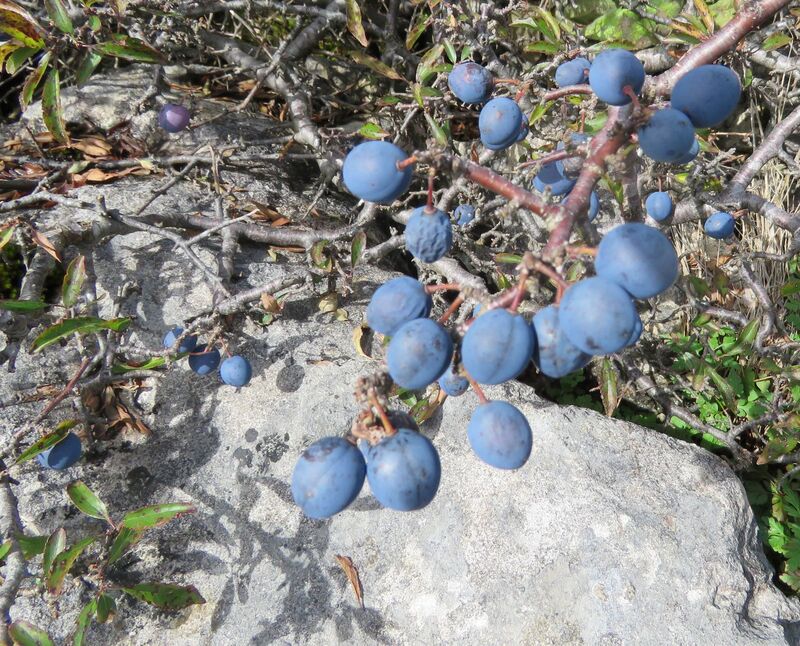 Whitbarrow, looking north to the Hervey Monument
Whitbarrow, looking north to the Hervey Monument A day of vistas. Perhaps we'll complete our walk before heavy showers reach us on strengthening south-east winds. If we wait for the wild weather of the coming days this exposed track will be just the place for flights of fancy.
With the approach of autumn there are dawns when mist defines the course of the RIver Kent. As the sky glows golden, Kendal Castle rises through mist lit by sunrise. Trees conceal the castle ruins which show more clearly as the season advances.
By Dyrham Park Wood there are hedgerow shrubs where I always seek autumn berries. Green fruits of black bryony festoon the shrubs. Green spindle berries that will ripen to pink. Robin's pincushion on rose, created by a gall wasp. Leaves of guelder rose so small, berries so few I have to search for them.
This summer the extent of ash die-back is stark, here on Whitbarrow and on Scout Scar. Distressed ash, bare of leaves in August. On the evening news there's an item about the threat from an oak pathogen, with a claim that the oak is England's tree. Up here on the Morecambe Bay Limestones the ash predominates and it's in trouble. A juniper pathogen is troublesome too.
Leaving the limestone terrace, we find a place where the drop looks insignificant but blackthorn sprawls down through rocks like a chevaux de frise, that defensive medieval barrier of rock-spikes designed to baffle assault. Or escape. Tenacious spiny branches cling to rock and clutch, will not yield. I am entrapped. Blackthorn flicks off my glasses and as I free myself from one spiny branch others lock about my legs. Sloe, blackthorn, Prunus spinosa. A slow, sloe descent,
A stonechat admonishes from a hawthorn. Few birds today, swallows and goldfinch flocking at this season and we hear them intermittently.
























 RSS Feed
RSS Feed